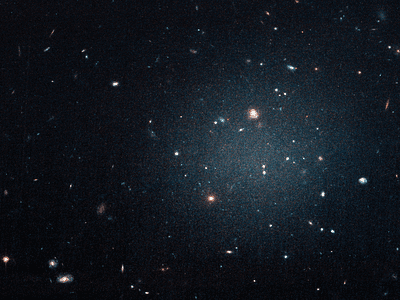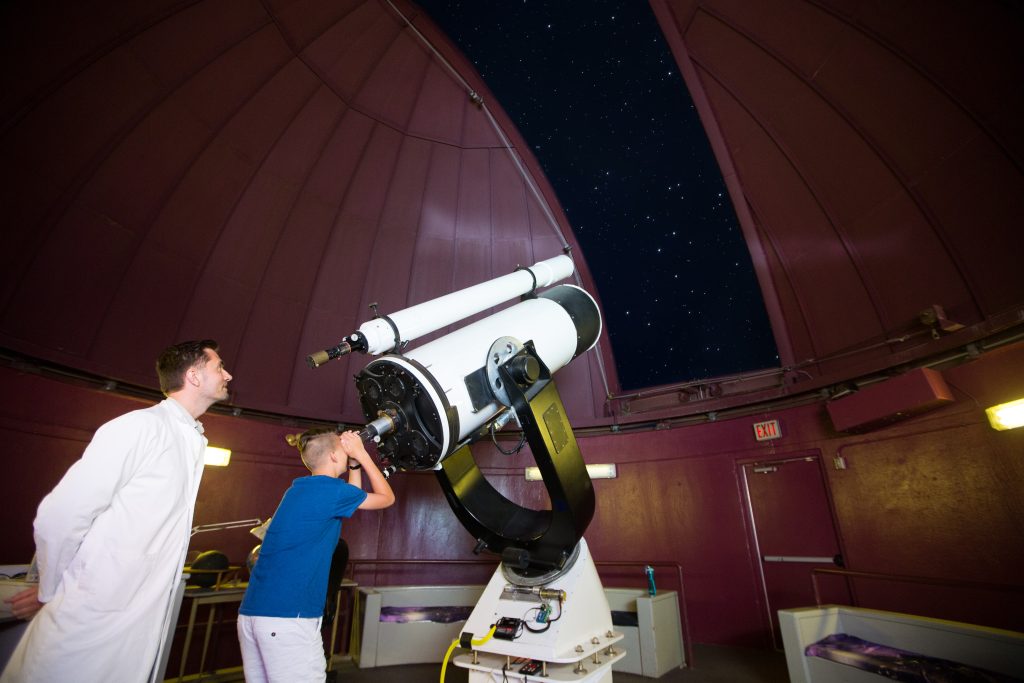Shows & Exhibits
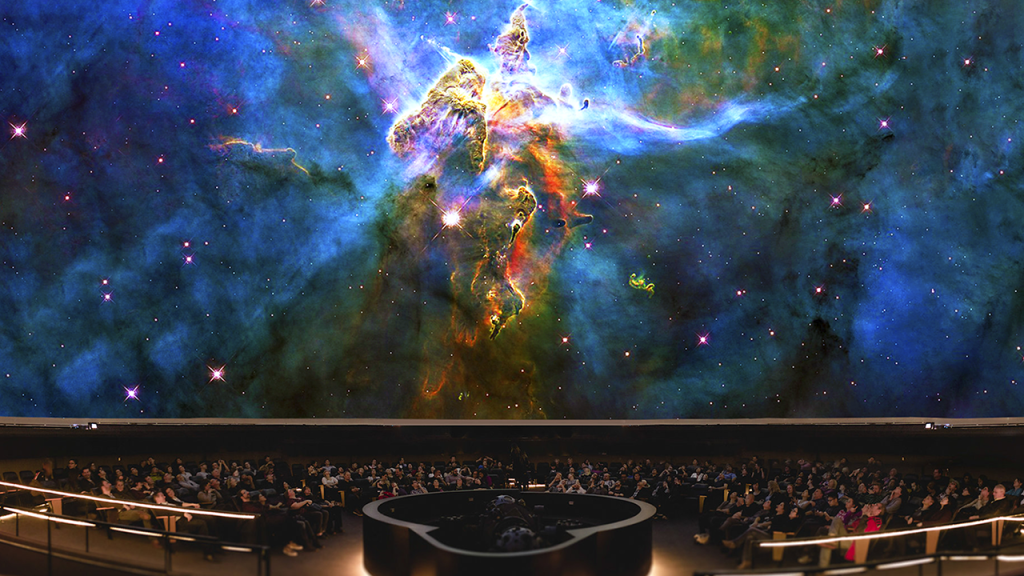
The Planetarium Star Theatre
Journey to space from the comfort of our one-of-a-kind theatre and get up close and personal with planets, meteor showers, black holes, galaxies, and other astronomical wonders that will have you marvelling at the universe.
Planetarium Star Theatre shows are part of our ticketed timed entry programming. All ages are welcome, but we recommend our shows for ages 6 years and up due to the scientific content.
*Please note: The show schedule is subject to change.
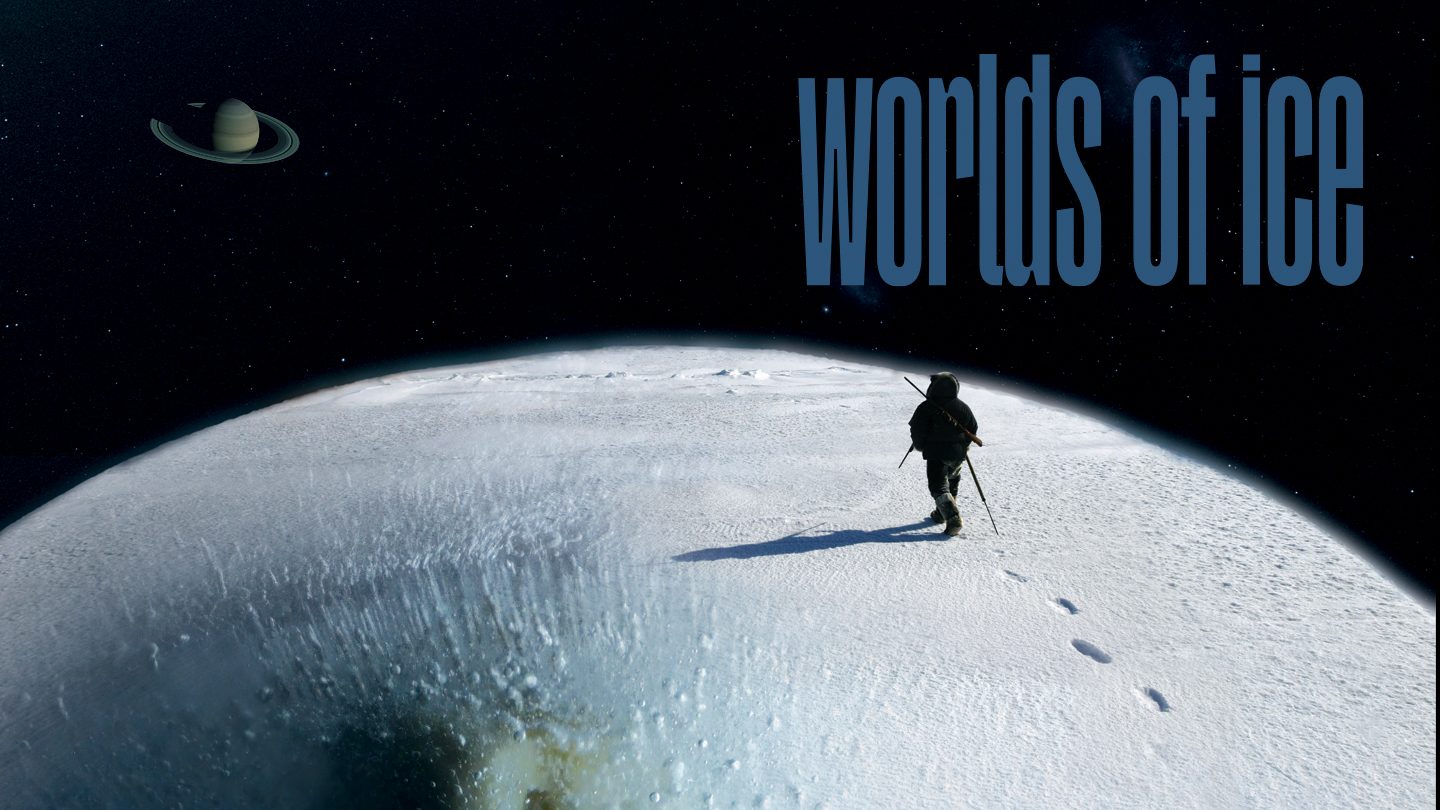
Worlds of Ice - Our newest show playing for a limited time starting in September.
Worlds of Ice invites us on a journey to the farthest reaches of the solar system, travelling through the many dimensions of ice—from the territories of the Arctic to a scientific complex nestled under the South Pole. We experience it all immersed in a kaleidoscopic igloo from which we emerge utterly dazzled by the chronicles of an icy wonderland, to which Beatrice Deer, a popular figure of Inuit culture, has lent her unique voice. Ages 10+ recommended. Show format: film

One Sky Project
One Sky Project: Indigenous Astronomy & One Sky Project: Dreams of the Stars. Choose your journey! Will you explore how different cultures around the world see different stories in the stars, or will you be inspired by the ancient astronomical knowledge of Indigenous peoples? Each show is a collection of captivating short films that beautifully blend astronomy, history, and mythology, revealing the deep connections between humanity and the cosmos. Ages 6+ recommended. Show format: film.
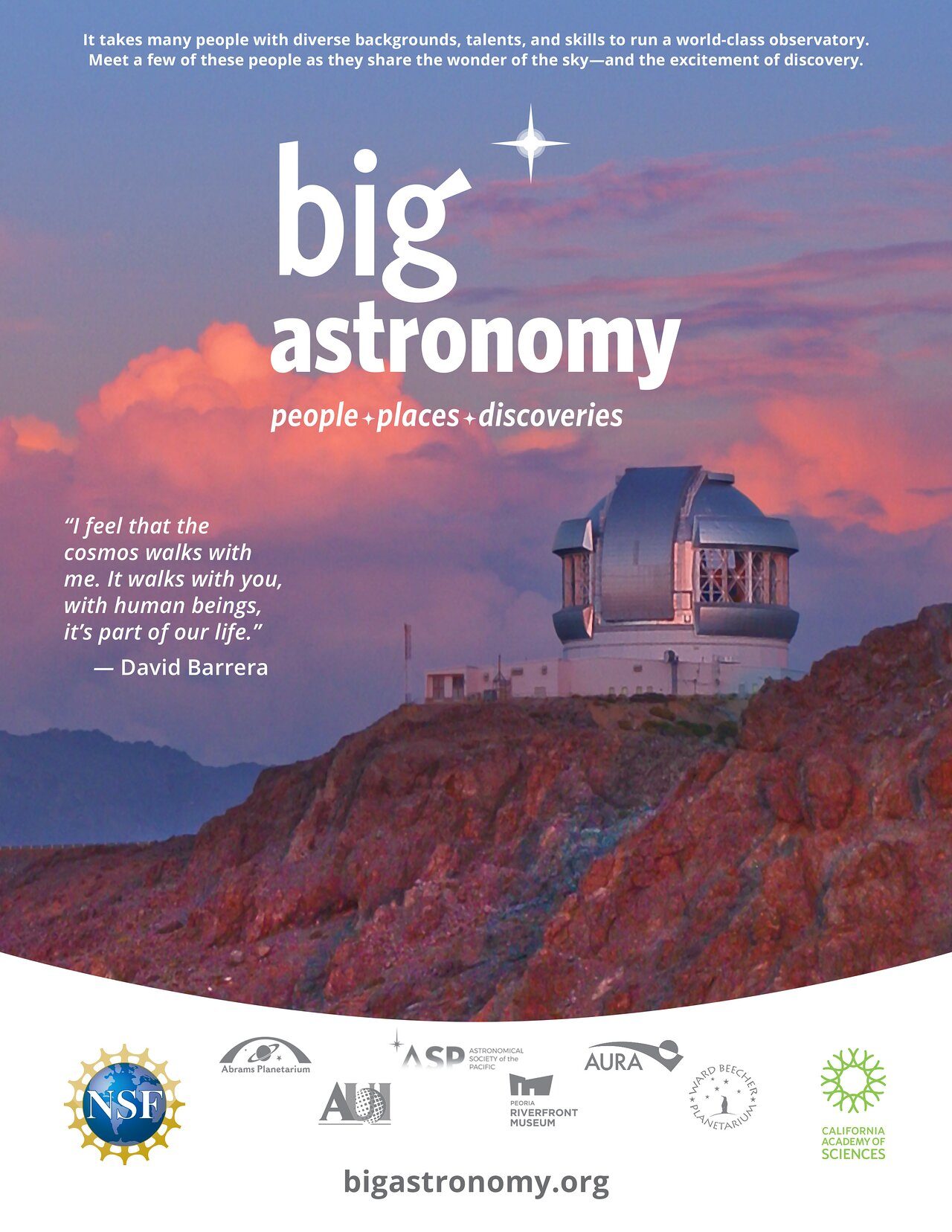
Big Astronomy
Big Astronomy: People, Places, Discoveries explores three observatories located in Chile, at extreme and remote places. With its high, dry, and dark sites, Chile is one of the best places in the world for observational astronomy. The show gives examples of the multitude of STEM careers needed to keep the great observatories working, giving us new views of the universe and new data for astronomical science! The show is narrated by Barbara Rojas-Ayala, a Chilean astronomer. Ages 10+ recommended. Show format: film
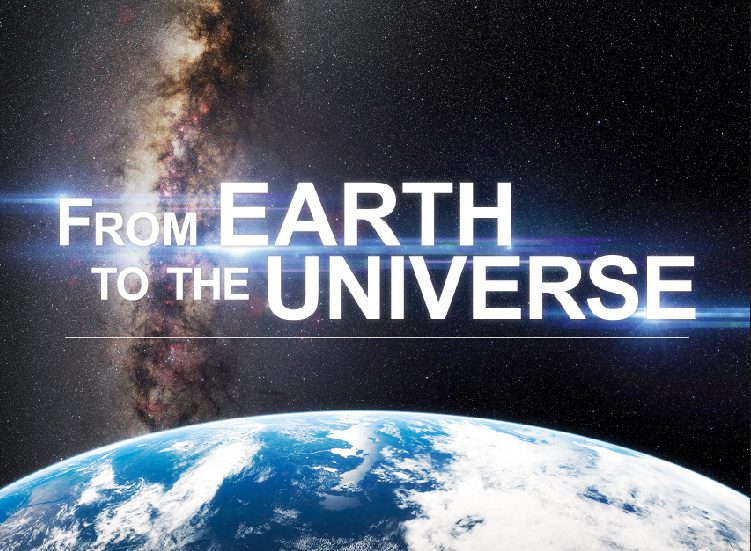
From Earth to the Universe
Take a voyage through time and space and revel in the splendor of the worlds in our Solar System and then travel to our Milky Way and beyond. Discover more about the history of astronomy, the invention of the telescope and how telescopes allow us to probe even deeper into the Universe. Ages 8+ recommended Show format: film
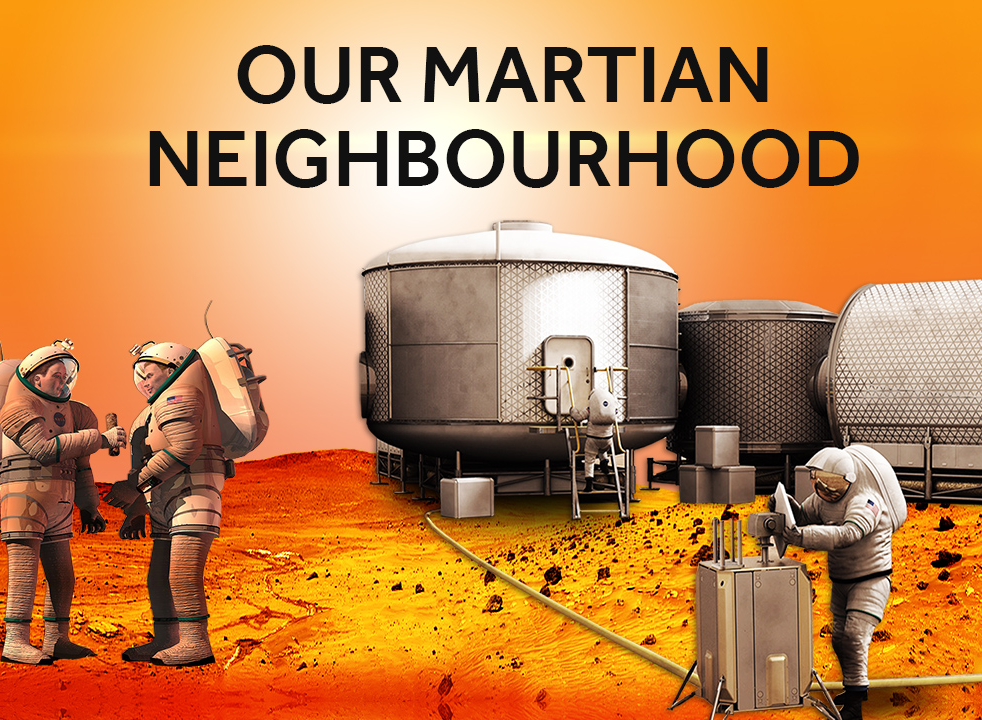
Our Martian Neighbourhood
Find out what it would take to live on the Red Planet with scarce resources, longer days and a new view of the night sky. Learn about other parts of the solar system that could also be settled, and what your “new” night sky would look like. Ages: 6+ recommended Show format: live with Space Centre interpretive staff
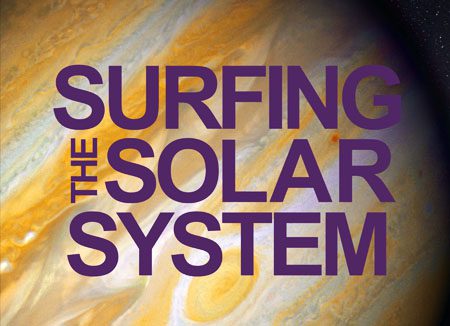
Surfing the Solar System
See the solar system as you’ve never seen it before – leave Earth behind to tour some of the most intriguing destinations in our solar system and find out more about some of the latest discoveries about our neighbouring planets. Ages: 8+ recommended Show format: live with Space Centre interpretive staff
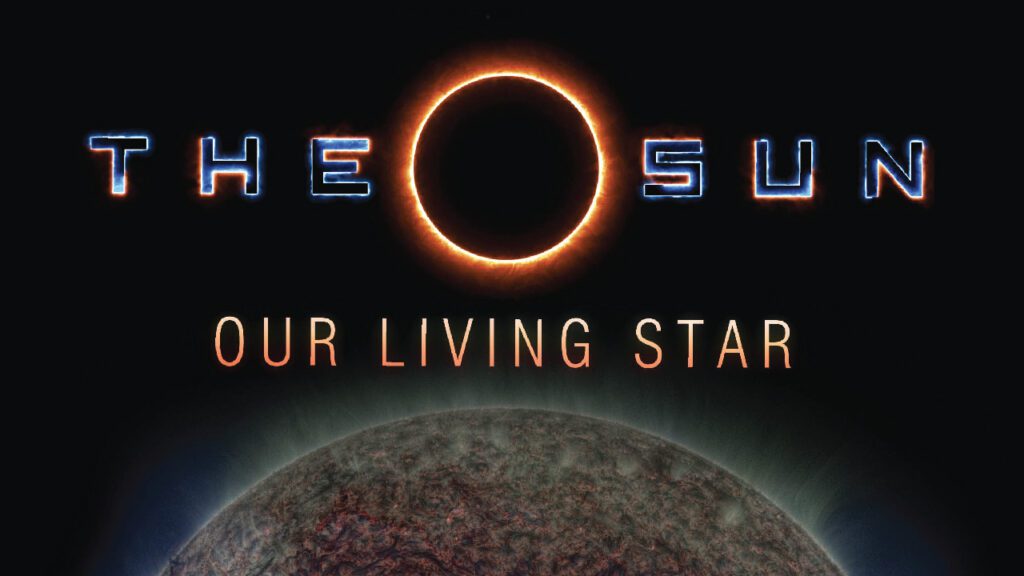
The Sun: Our Living Star
The Sun has shone on our world for four and a half billion years. The light that warms our skin today has been felt by every person who has ever lived. It is our nearest star and our planet’s powerhouse, the source of the energy that drives our winds, our weather and all life. Discover the secrets of our star in this planetarium show and experience never-before-seen images of the Sun’s violent surface. Ages: 8+ recommended Show format: film
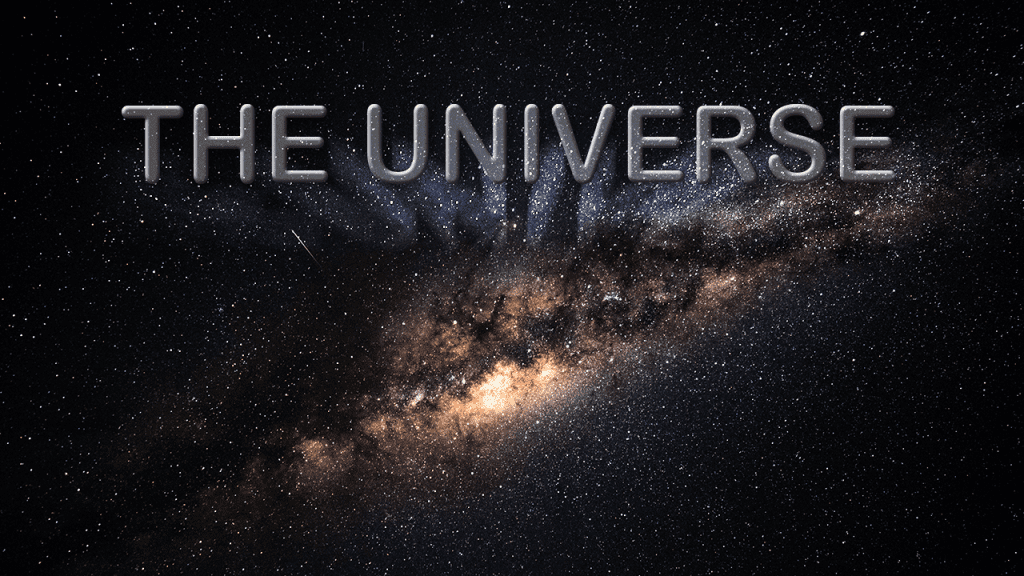
The Universe
Travel through our solar system and beyond our Milky Way Galaxy. Ages: 8+ recommended Show format: live with Space Centre interpretive staff
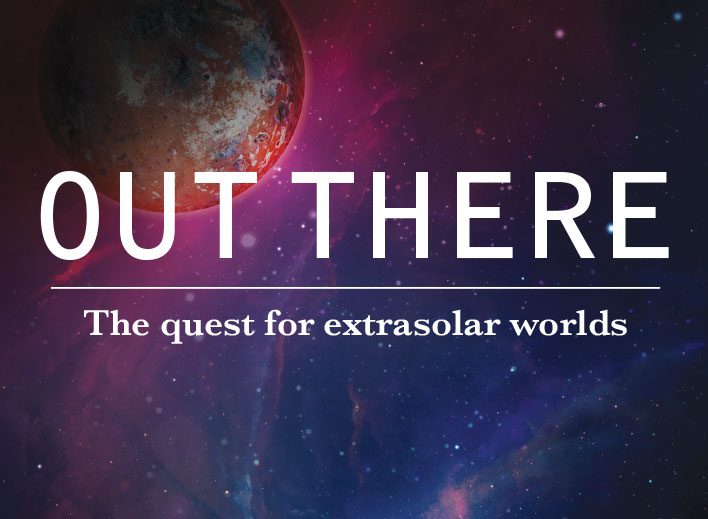
Out There
For thousands of years, humans thought that the Earth was the centre of the universe. Thanks to our curiosity, imagination and urge to explore, we now know that planets like our Earth are nothing special in the cosmos. Discover more about the quest for planets beyond our solar system. Ages: 8+ recommended Show format: film
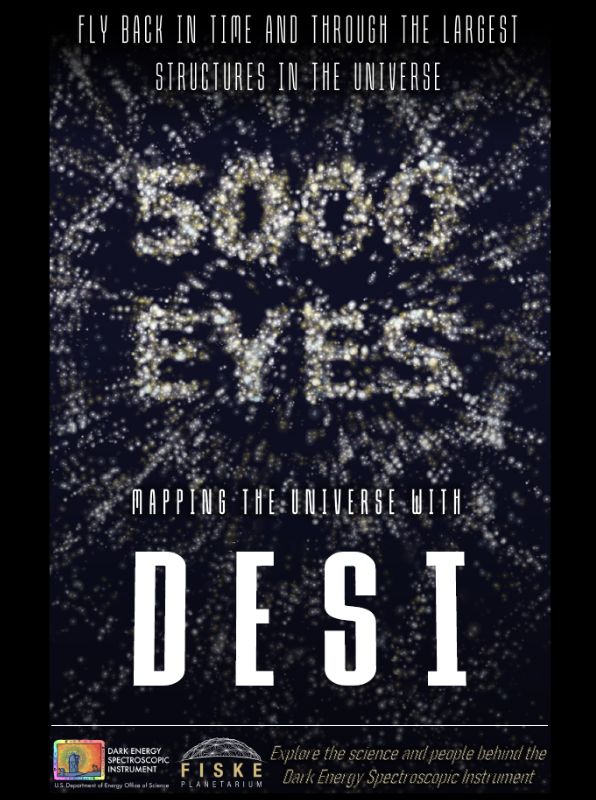
5000 Eyes
The Dark Energy Spectroscopic Instrument (DESI) is creating the most detailed map of our nearby universe. Installed on the Mayall telescope on Kitt Peak in Southern Arizona, DESI's 5000 independently operated robots can measure the light from thousands of galaxies at once. Join us as we explore the science, instrument, and people behind this global endeavor!

Stars
Live Presentation See stars like you've never seen them before. We will take you on a visually stunning journey through the life of a star, from its birth in a stellar nursery to the majestic pulse of a neutron star.
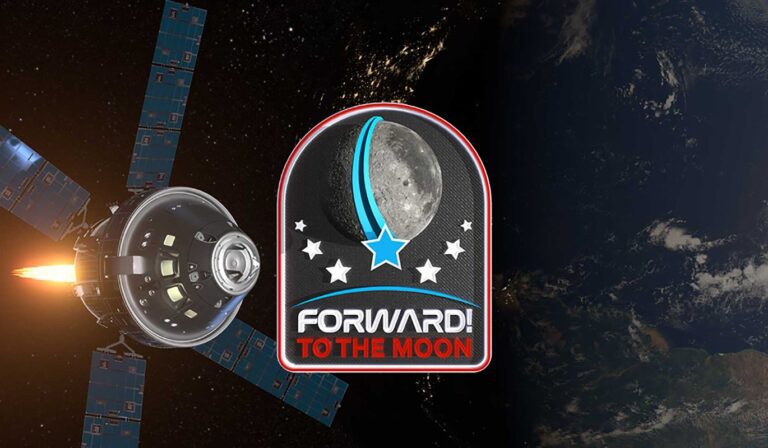
Forward to the moon
We are the Artemis generation. NASAs 21st century Artemis program, is the next step in our mission to explore the universe and land the first woman and person of color on the surface of the Moon. Kari Byron, from Crash Test World and MythBusters, narrates this journey beyond the Earth towards a sustainable future in space.
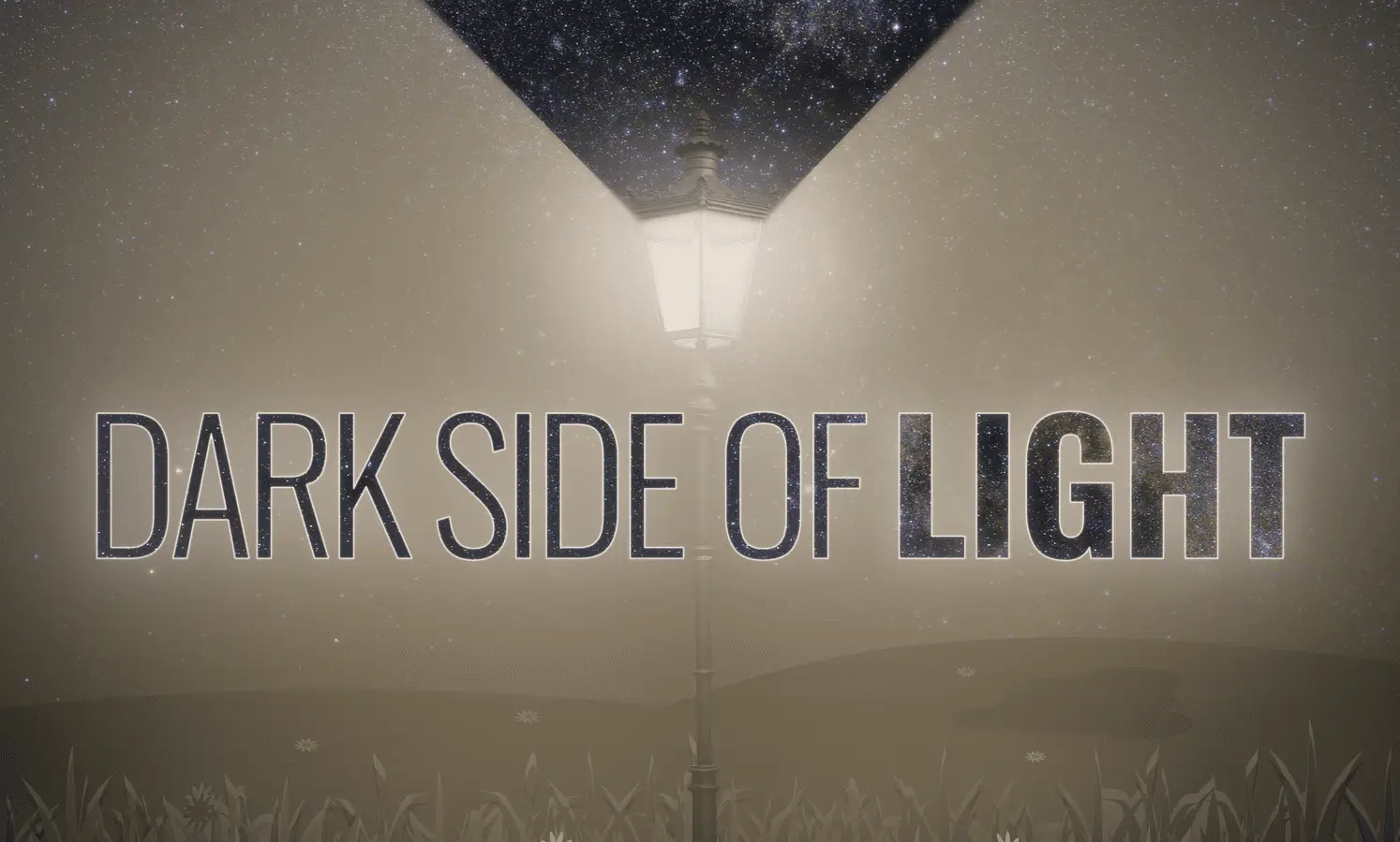
Dark Side of Light
For the longest time, light has been a necessary tool to provide us with the ability to see well in the dark. But, light can also be a problem, especially when it makes it difficult to see the stars in our sky. Light pollution affects us and all living things on our planet at night, disrupting our natural cycles and activities when it’s dark out. Join us in understanding how we can do our part in reducing light pollution and how we can conserve our night sky. For ages (6+)

Forward to the moon
We are the Artemis generation. NASAs 21st century Artemis program, is the next step in our mission to explore the universe and land the first woman and person of color on the surface of the Moon. Kari Byron, from Crash Test World and MythBusters, narrates this journey beyond the Earth towards a sustainable future in space.
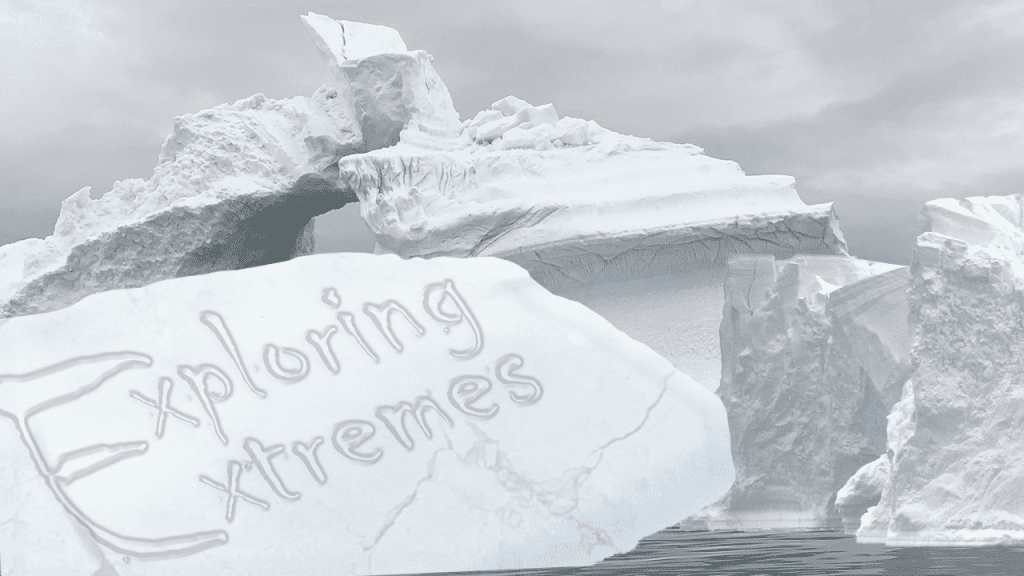
Exploring Extremes
Discover how scientists use Earth-based environments as analogues for studying environments on other planets. Visit one of Earth’s driest deserts, Antarctica’s largest sub-glacial lake, and Pavilion Lake in our own backyard to look at how scientists use technology to study extreme environment Ages: 8+ recommended Show format: live with Space Centre interpretive staff
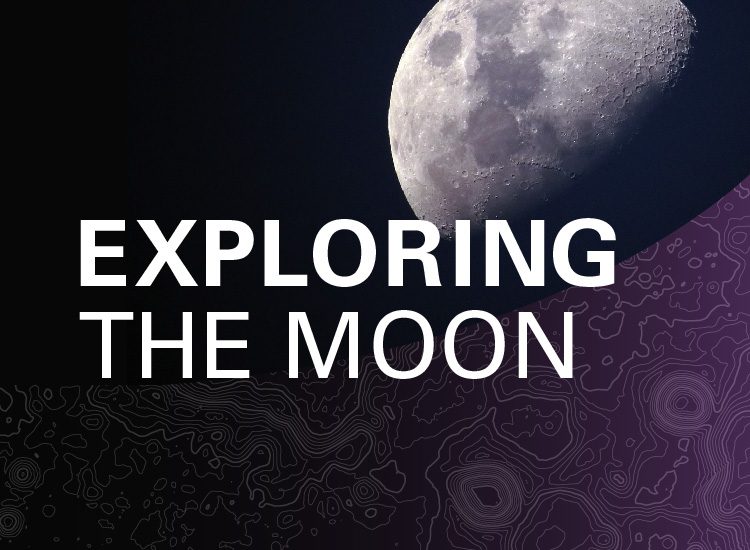
Exploring the Moon
Throughout history, humans have explored the Moon to better understand its role in our sky. Learn about the various scientific eras of studying and exploring the Moon, and what could be in store for the future of space travel and Canadian scientific contributions to astronomy! Ages: 7+ recommended Show format: live with Space Centre interpretive staff
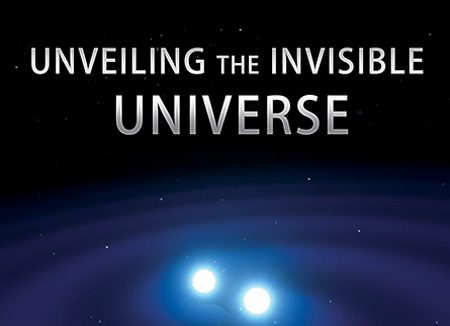
Unveiling the Invisible Universe
There is more to the universe than we can see with our eyes. Discover more about how scientists, from Galileo's first use of an optical telescope to today's scientists measuring minute ripples in spacetime, unveil the invisible universe. Ages 8+ recommended Show format: film
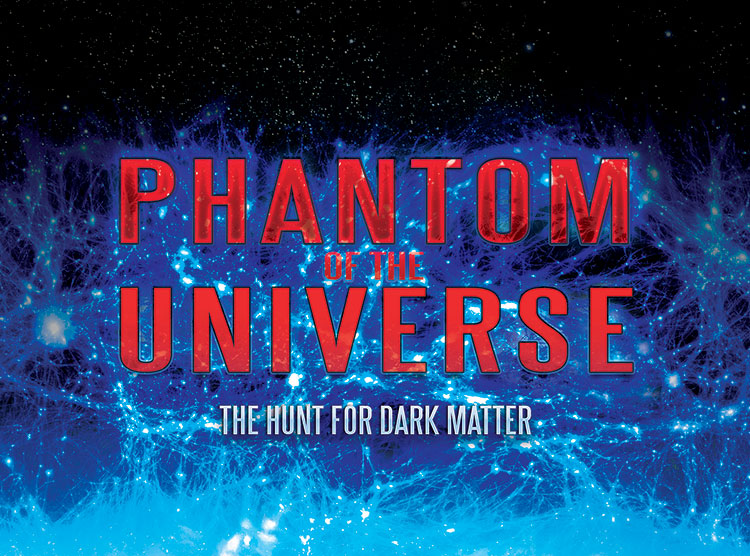
Phantom of the Universe
Discover more about dark matter, from the Big Bang, to the theorizing of dark matter's existence.
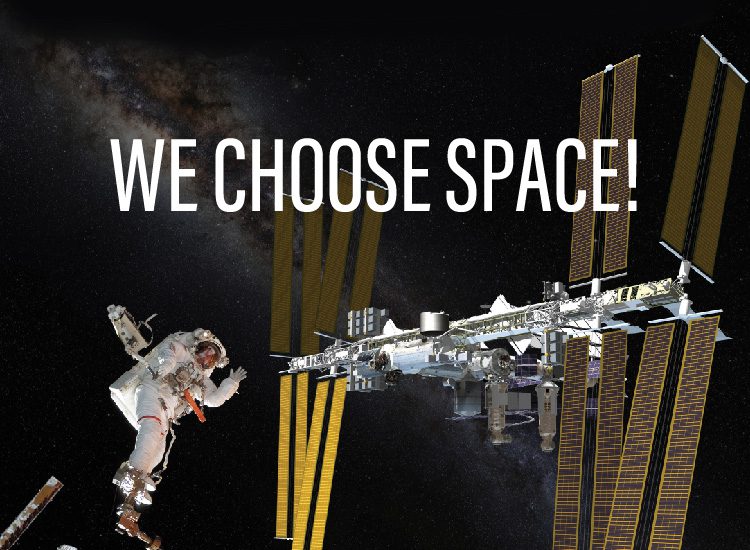
We Choose Space
For anyone who dreams of space and wonders about human spaceflight. In this film astronauts Scott Parazinsky, Tom Jones and Gene Cernan, and veteran space reporter Walter Cronkite are your tour guides on an adventure to the completed International Space Station and to the past and future Moon. Ages 8+ recommended Show format: film

From Earth to the Universe
Take a voyage through time and space and revel in the splendor of the worlds in our Solar System and then travel to our Milky Way and beyond. Discover more about the history of astronomy, the invention of the telescope and how telescopes allow us to probe even deeper into the Universe. Ages 8+ recommended Show format: film
Live Science Shows in the Groundstation Canada Theatre
Prepare to be wowed by our interactive live science demonstrations! Learn about the latest scientific discoveries, exoplanets, gravity, rockets, and much more all through entertaining live presentations. These live science shows are part of our ticketed timed entry programming.
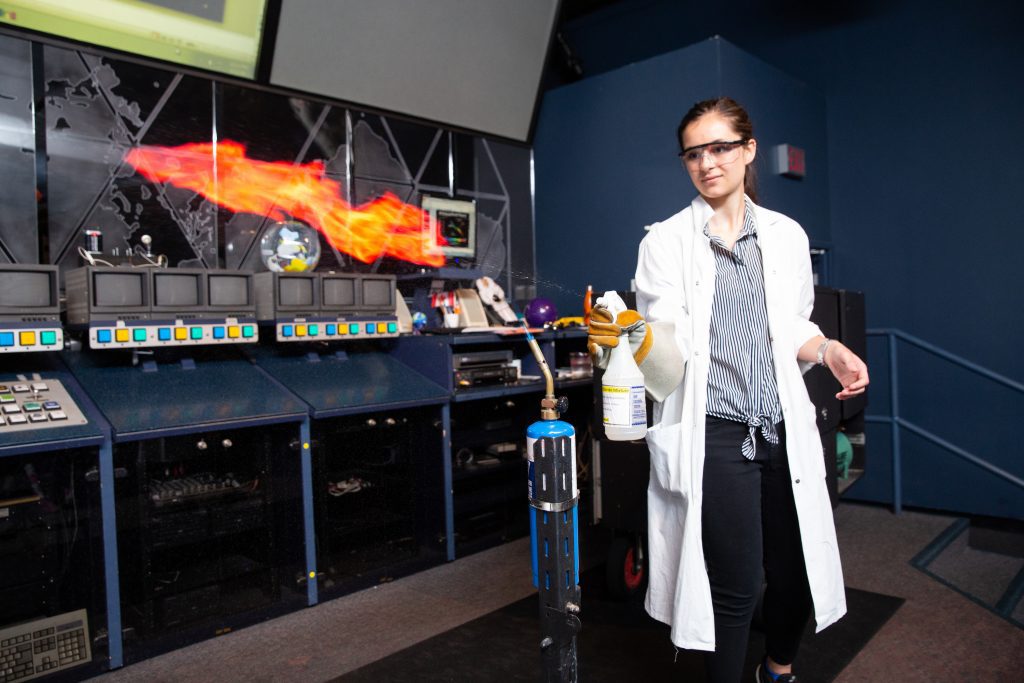
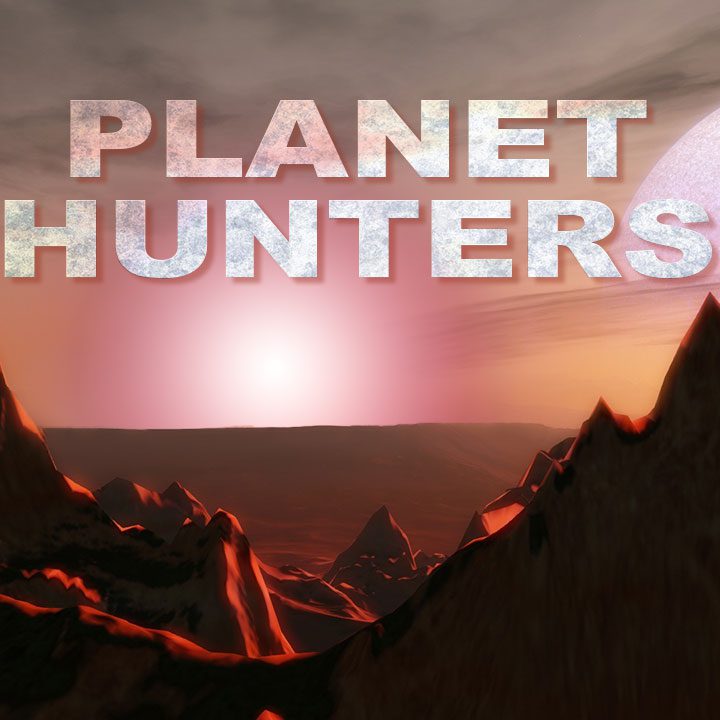
Planet Hunters
Discover more about planet hunting techniques astronomers use and their quest to find signs of life in the universe. Show length: 20 minutes
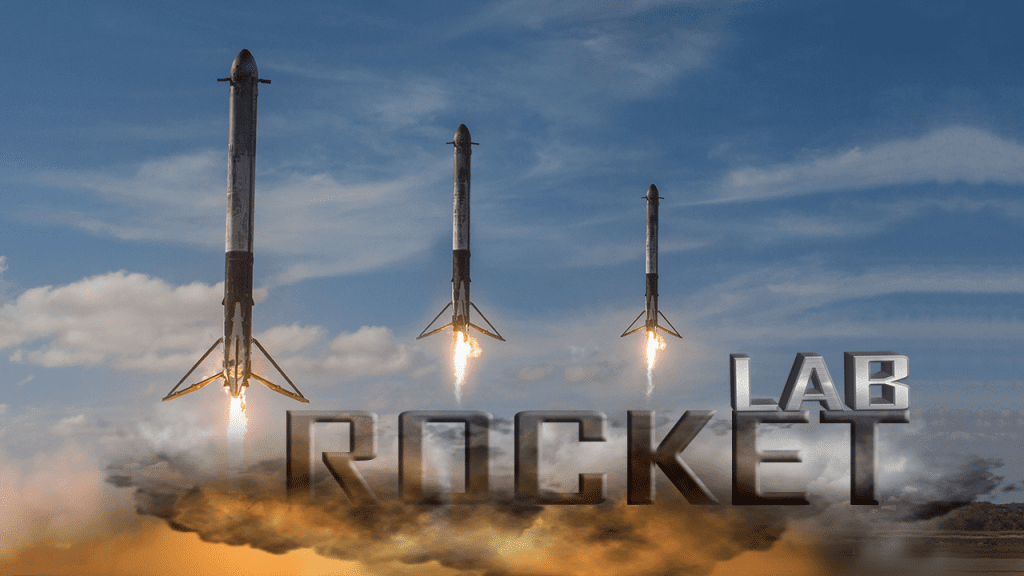
Rocket Lab
3 . 2 . 1 . . . This time it IS rocket science. What goes up doesn’t necessarily come down. Take part in this live demonstration of the basic principles of Newton’s Laws of Motion and its use in rocketry. Show Length: 20 minutes
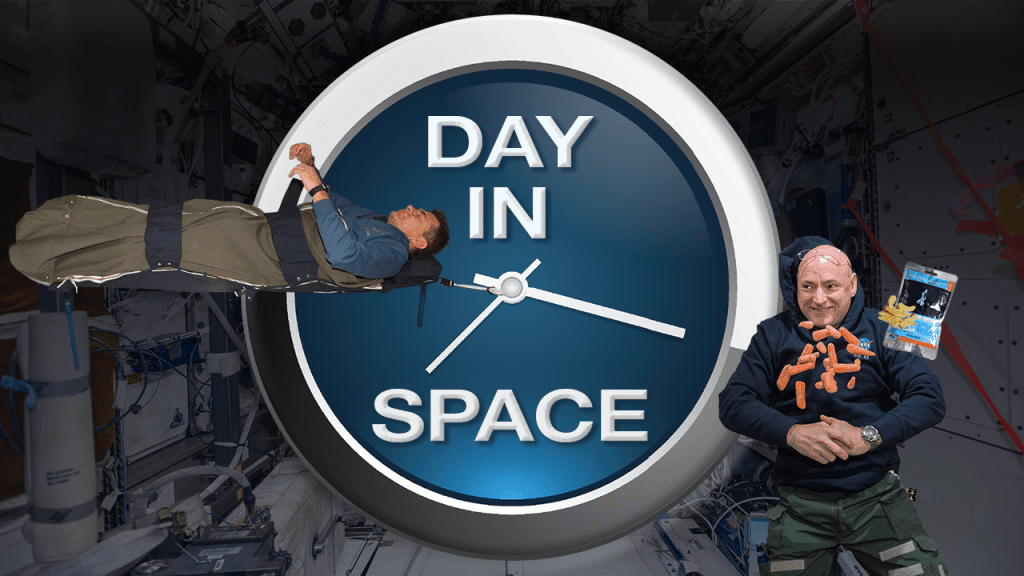
Day in Space
What exactly do astronauts do up there? From microgravity experiments to eating and sleeping while floating - find out what it takes to live and work in space. Age: 6+ (recommended) Show Length: 20 minutes
Hands-On Learning in the Cosmic Courtyard
Experience the wonders of space with your own hands by using our interactive features to get a deeper understanding of some of the most fascinating facts and discoveries. Learn about deep space, climate change, light pollution, and the potential for life on other planets.
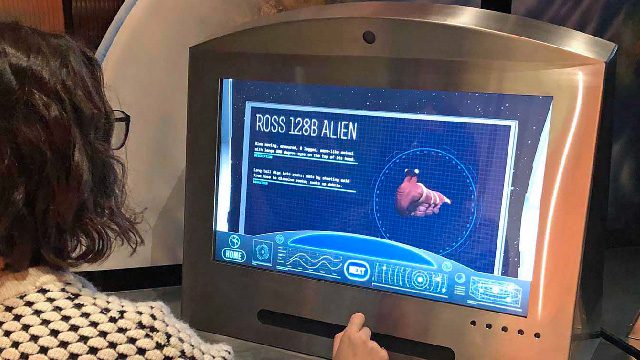
Alien Encounter
You’re a starship captain looking for life in a galaxy. Your mission is to find a planet that can sustain human life-are you brave enough to try?
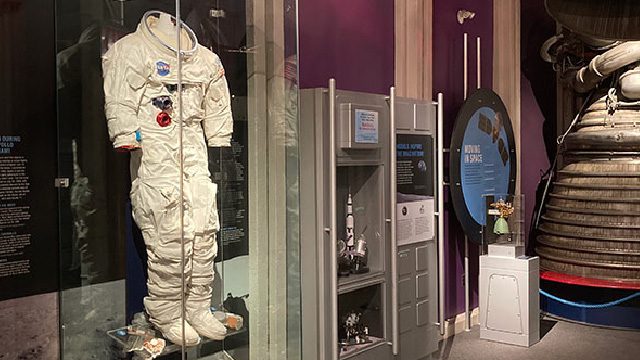
Michael Collins Suit
Learn more about how food and technology made it possible for the Apollo space program to put 12 astronauts on the moon.
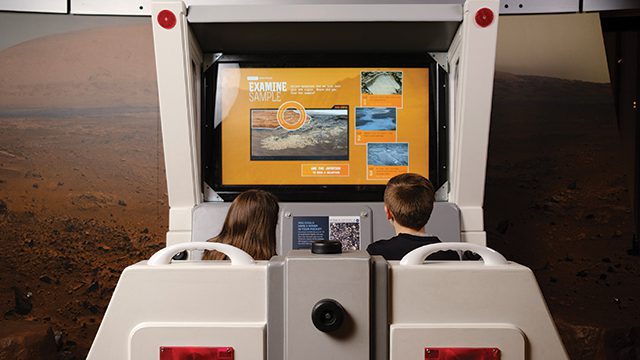
Mars Explorer
Step into the role of a planetary geologist and travel to Mars to see if you can find evidence of life on the red planet.
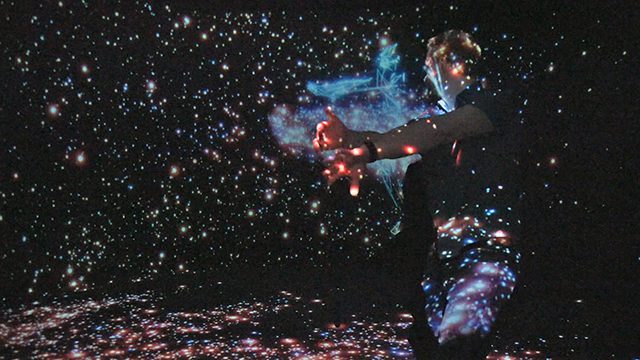
Star-Stuff: A way for the universe to know itself
Play, dance and float through the cosmos. Be transformed into a myriad of constellations in this interactive immersive VR experience. Grab a friend and use your avatars to collaborate and move the stars in your galaxy.

Alien Encounter
You’re a starship captain looking for life in a galaxy. Your mission is to find a planet that can sustain human life-are you brave enough to try?

Michael Collins Suit
Learn more about how food and technology made it possible for the Apollo space program to put 12 astronauts on the moon.
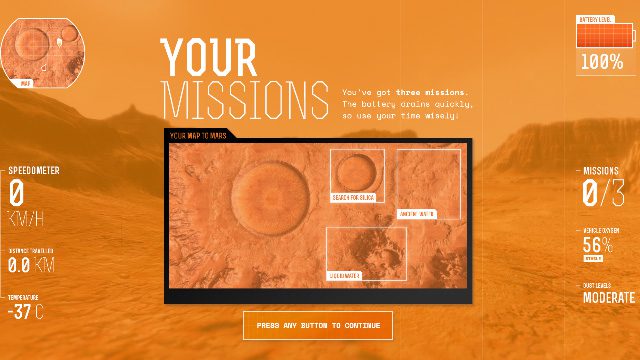
Mars Explorer
Step into the role of a planetary geologist and travel to Mars to see if you can find evidence of life on the red planet.
Stargaze in the GMS Observatory
Take a peek at Vancouver’s night skies through the ½-meter Cassegrain telescope in our Gordon MacMillan Southam Observatory. Located right next to the Space Centre, this facility is staffed with knowledgeable guides who will answer questions as you explore awe-inspiring views of planets, moons, and star clusters.

